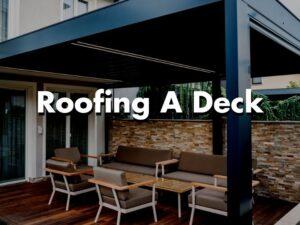Brisbane Deck Builders Does A Comparison Of Decking
Timber Decking vs Composite Decking Brisbane Deck Builder: Which is better: wood decking or composite decking?
One of the most important considerations you’ll have to make when designing your dream deck is which decking boards to employ.
Wood (timber) and wood-plastic composites are the two most commonly utilised materials.
This post will go through the elements to consider when picking between wood and composite decking, whether you want to perform the work yourself or hire a contractor.
Composite decking vs. timber decking
Wooden decking planks are a good choice because they are strong and traditional. There is a wide variety of rich, colourful wood types to choose from. While natural wood appears appealing, each type of wood has its own set of issues. Whatever wood you choose, it will decay over time.
As a result, a growing number of people are choosing wood-plastic composite decking comprised of recycled wood powder and high-density polyethylene. Composite decking planks have the appearance of real wood while greatly prolonging the life of the deck.
Finally, you will be the one to choose the material for the deck’s surface.
The Advantages and Disadvantages of Wood vs. Composite Decking
Both offer benefits and drawbacks, and you must decide which is the better option for you based on your budget, specs, and overall tastes. If you’re not sure what the difference between composite and wood decking is, there are a few things to think about when deciding on the appropriate material for your dream deck.
Physical appearance – Distinction in appearance and feel.
One of the most common worries when choosing a decking material is that composites would not look as good as wood. Recent improvements in composite fabrication have allowed them to mimic the inherent beauty of wood. As a result, while composite decking boards appeared to be manufactured at first, they have progressed to the point where they can reproduce the grain of actual wood, making them more resembling natural wood.
Upkeep And Maintenance
When comparing a composite deck to a timber deck, consider the maintenance and upkeep requirements of each material.
A deck is an investment, and as the focal point of your yard, you want it to last as long as possible.
In addition to ordinary maintenance, timber decking need the following upkeep.
Sanding: Sanding should be done every two to five years. Sand your deck after power washing it, before staining and sealing it, and on a regular basis to remove any elevated fibres or debris that could produce splinters.
It must be sealed every two to five years. It is vital to seal a wood deck in order to preserve it from environmental elements such as heat and rain.
Staining: This treatment must be performed every two to five years. Staining protects the deck by waterproofing it and concealing the colour and wood from weather and other environmental elements that cause warping and damage.
Repainting is required every two to five years. Repainting your deck is vital to keep it looking good and to protect the paint from wear and tear.
Cleaning is advised every six months. Sweep and clean your deck with caution.
Although your composite deck should be cleaned and inspected on a regular basis, this low-maintenance alternative to wood is a simple way to design a lovely deck. Unlike timber, composite decking boards do not necessitate as much costly and time-consuming care to keep your deck’s structure solid and its aesthetic lovely for years to come.
Humidity In Brisbane
One notable downside of timber decking is that the planks rapidly absorb water, which can be an issue in Brisbane.
Wood decking boards that are not regularly stained, sealed, or painted are prone to warping, splintering, cracking, and rotting. In comparison, composite decking boards are totally moisture resistant, allowing them to be erected in high humidity environments without rotting.
Durability Of The Boards
Consider the lifespan of the material as well as its capacity to endure regular wear and tear as well as adverse weather conditions when choosing a material for your deck. While wood decks seem great, weathering causes them to distort, grow dangerous, unattractive splinters, rot, and disintegrate.
Scratching, chipping, staining, and fading/UV resistance are some variables that can limit the life of wood decking.
Composite decking planks, on the other hand, are less likely to cause environmental problems. With regular care, composite decking can last up to 20 years, whereas a timber deck has a life expectancy of 10 to 15 years.
Temperature Of The Deck Surface
One advantage of wood decking is that it is far more heat resistant than composite decking.
When exposed to direct sunshine, composites can become rather heated, whereas wood remains relatively cold.
However, new manufacturing and technological improvements have enabled composite decking boards to reduce heat absorption while also improving UV stability. If you reside in a location with hot summers, such as Brisbane, this is an important element to consider.
The Cost
There is a price difference between wood and composite decking. The cost of composite decking boards, including installation, ranges from around $22 to $165 per square foot. Wood decking boards are slightly less expensive, ranging from $80 to AUD 90 per square metre. While purchasing wood decking boards is less expensive, the cost of maintenance rapidly mounts up.
The cost of staining a deck is approximately AUD 35 per square metre. While composite decking is initially more expensive, you will save money in the long run by avoiding costly repairs as well as the effort and price associated with maintaining a wood deck.
Eco-friendly Option
There is conflicting information about whether composite or wood decking is better for the environment.
Wood is a naturally biodegradable material.
In Australia, natural wood is derived from plantations or newly emerging forests. Trees naturally collect and store carbon dioxide from the environment in their wood.
The CO2 is sequestered in the wood even after it has been extracted and processed into wood products such as decking planks. As a result, the manufacturing process (harvesting, milling, and transport) is more energy efficient than composite wood manufacture.
Composite decking is constructed from recycled polymers and wood fibres (such as sawdust). Composite decking producers claim that their product is more environmentally friendly than wood for two reasons.
1. As the demand for new wood decreases, less wood must be harvested.
2. 95 percent of composite products are made from recycled wood and plastic.
Resistance To Pests
Unlike most wood decking, composite decking is resistant to termites and other wood-destroying insects.
This is a significant benefit in Brisbane, as termites are a major nuisance that every home should be on the lookout for.
It is totally up to you and your budget to decide which deck material to use. A classic timber deck may be an excellent alternative if you like the beauty of natural wood and are ready to invest extra time and money in maintenance.
If this isn’t for you, consider installing a composite deck.
Have you chosen which one to purchase? For additional information, contact Local Deck Builders.
The post Timber Decking vs Composite Decking Brisbane Deck Builder appeared first on Write Buff.
The post Timber Decking vs Composite Decking Brisbane Deck Builder appeared first on https://gqcentral.co.uk




